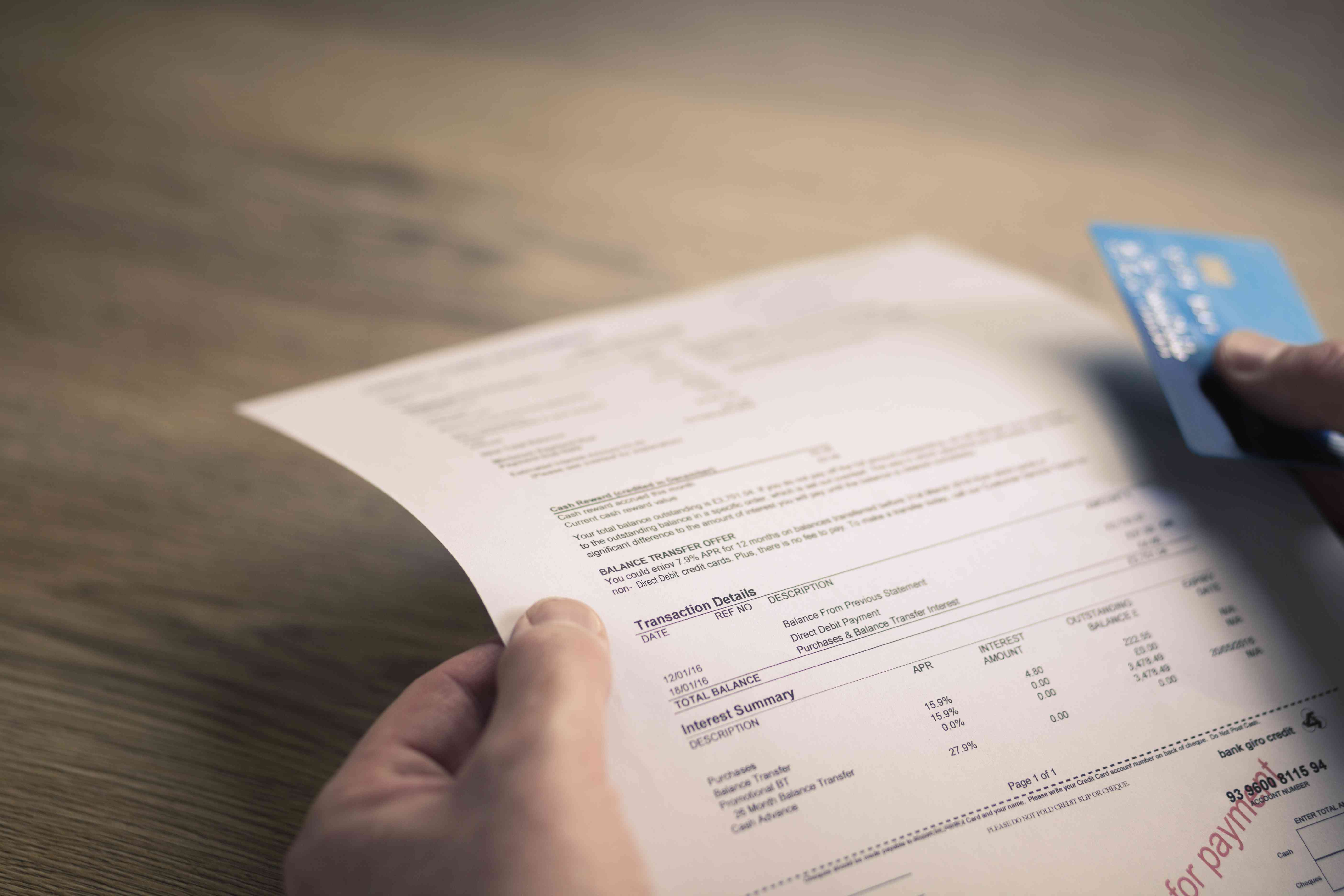

Finance
How To Find How Much Student Loan I Owe
Published: October 22, 2023
Looking to find out how much student loan you owe? Our finance experts can help you navigate your student loan debt and provide guidance on repayment options.
(Many of the links in this article redirect to a specific reviewed product. Your purchase of these products through affiliate links helps to generate commission for LiveWell, at no extra cost. Learn more)
Table of Contents
- Introduction
- Step 1: Gather Necessary Information
- Step 2: Access National Student Loan Data System (NSLDS)
- Step 3: Retrieve Federal Student Loan Information
- Step 4: Contact Private Lenders
- Step 5: Review Loan Statements and Documents
- Step 6: Utilize Loan Repayment Estimation Tools
- Step 7: Seek Assistance from Loan Servicers or Financial Aid Offices
- Conclusion
Introduction
Student loans have become a vital element in financing higher education for countless individuals around the world. While these loans provide access to education, they also come with the responsibility of repayment. It’s essential for students and graduates to understand the amount of student loan debt they owe in order to effectively manage their finances.
However, determining the exact amount of student loan debt can be a daunting task, as it may involve multiple lenders and various types of loans. To make things easier, this article will guide you on how to find out how much student loan debt you owe. By following these steps, you can gain a clear understanding of your loan obligations and take control of your financial future.
Before you begin the process, it’s important to note that there are two main categories of student loans: federal loans and private loans. Federal loans are funded and regulated by the federal government, while private loans are issued by banks, credit unions, or other private lenders. The steps outlined in this article will cover both types of loans.
It’s worth mentioning that the process of determining your student loan balance may differ slightly depending on your country or region. Therefore, it’s advisable to consult the relevant loan agencies, government websites, or financial aid offices for specific instructions in your area. With that being said, let’s delve into the steps to find out how much student loan debt you owe.
Step 1: Gather Necessary Information
Before you can begin the process of finding out how much student loan debt you owe, it’s crucial to gather all the necessary information. This will ensure that you have a comprehensive overview of your loans and can accurately determine your outstanding balance.
Start by collecting any loan documents, statements, or correspondence related to your student loans. These may include promissory notes, loan agreements, monthly statements, or repayment schedules. If you have multiple loans, make sure to gather information for each one separately.
In addition to loan-specific documents, it’s important to have your personal identification information readily available. This may include your social security number, driver’s license, or other identification documents. Having this information accessible will make the subsequent steps in the process much smoother.
If you’re not sure where to find all the necessary documents, start by checking your email inbox or physical mail for any communications from your loan servicers or lenders. You can also log in to your online accounts with loan servicers and lenders, as they often provide access to loan statements and documentation.
Once you have gathered all the necessary documents and identification information, you’re ready to move on to the next step in finding out how much student loan debt you owe.
Step 2: Access National Student Loan Data System (NSLDS)
The National Student Loan Data System (NSLDS) is a valuable resource that can provide you with a comprehensive overview of your federal student loan debt. It is the official database for all federal student loan information and is maintained by the U.S. Department of Education.
To access NSLDS, visit their website at www.nslds.ed.gov. You will be required to create an account and provide your personal identification information, such as your social security number, date of birth, and full name.
Once you have logged in, you will be able to view detailed information about your federal student loans. This includes the loan type, loan status, loan servicer, outstanding balance, and repayment status. You can also find information about any grants or federal aid you may have received.
It’s important to note that NSLDS only provides information on federal student loans. If you have private loans, you will need to consult the specific lenders or loan servicers for details on those loans.
NSLDS is a valuable tool for tracking your federal student loan debt and understanding your repayment obligations. Take some time to review the information provided and ensure that it aligns with your own records and expectations.
If you notice any discrepancies or have questions about the information displayed in NSLDS, reach out to your loan servicer or contact the Federal Student Aid Information Center for assistance. They will be able to provide clarification and help you navigate through any issues related to your federal student loans.
Now that you’ve accessed NSLDS and obtained the necessary information on your federal student loans, it’s time to move on to the next steps to ensure a comprehensive understanding of your overall student loan debt.
Step 3: Retrieve Federal Student Loan Information
In addition to accessing the National Student Loan Data System (NSLDS), it’s important to retrieve additional information about your federal student loans. This extra step will provide you with a more holistic understanding of your loan terms, repayment options, and any potential benefits or forgiveness programs.
Start by visiting the websites of your loan servicers or lenders. These are the organizations responsible for managing your federal student loans and handling your repayment process. They typically provide online portals or account systems where you can access detailed loan information.
Log in to your loan servicer’s website using the same credentials you used to access NSLDS, or create a new account if necessary. Once logged in, you should be able to view specific details about each loan, including the interest rate, loan balance, and repayment status.
Take the time to review the terms and conditions of each loan, especially if you are unfamiliar with certain aspects. Understanding the interest rates, repayment plans, and any available benefits can help you make informed decisions regarding your student loan management.
While on your loan servicer’s website, be sure to explore any resources, FAQs, or educational materials they offer. These can provide valuable insights into loan repayment strategies, loan forgiveness programs, and other important information to help you navigate your student loan debt.
If you have questions or need assistance understanding your federal student loan information, don’t hesitate to reach out to your loan servicer’s customer service. They are trained to help borrowers understand their loan terms and offer guidance on available repayment options.
Remember to document any information or correspondence related to your federal student loans. This will serve as a handy reference for future inquiries or when discussing your loans with loan servicers or financial advisors.
By retrieving your federal student loan information directly from your loan servicers, you will gain a comprehensive understanding of your loan terms and repayment options. This will empower you to make informed decisions about your student loan debt and take control of your financial future.
Step 4: Contact Private Lenders
In addition to federal student loans, you may also have private student loans. These loans are issued by private lenders such as banks, credit unions, or other financial institutions. It’s important to contact your private lenders to obtain accurate information about your private student loan debt.
Start by identifying the lenders who provided your private student loans. This information can usually be found on your loan documents or statements. If you’re unsure, you can also check your credit report, as it will list all outstanding debts, including private student loans.
Once you have identified your private lenders, gather their contact information. This may include their customer service phone number, email address, or website. It’s advisable to have this information readily available before reaching out to them.
Contact each private lender individually and provide them with the necessary identification and loan details. This may include your name, social security number, loan account number, and any other information the lender requires to locate your loan in their system.
During your interaction with the lender, make sure to ask for your outstanding loan balance, interest rate, and repayment terms. You may also inquire about any available repayment options, loan consolidation, or refinancing programs. Obtaining this information will help you understand the complete picture of your private student loan debt.
It’s important to note that private lenders have different policies and processes for managing student loans. Be prepared to provide any requested documentation, such as loan statements or proof of identification, to facilitate the inquiry process.
If you encounter any difficulties or have questions during your communication with private lenders, don’t hesitate to ask for clarification. Their customer service representatives are there to assist you and provide the information you need.
Remember to record all the information and correspondence from your private lenders. This will serve as a reference point and help you keep track of your private student loan details.
By contacting your private lenders, you will gather the necessary information to understand your private student loan debt. This step is crucial for creating a comprehensive overview of your overall student loan obligation and managing your finances effectively.
Step 5: Review Loan Statements and Documents
As you continue your journey to determine how much student loan debt you owe, it’s essential to carefully review your loan statements and documents. These contain valuable information about your loans, including the outstanding balance, payment history, and any relevant terms and conditions.
Gather all your loan statements and documents from both federal and private lenders. This includes monthly statements, annual summaries, and any correspondence or notices you have received regarding your loans. Organize them in a systematic manner for easy reference.
Start by reviewing your loan statements for each loan you have. Pay close attention to the outstanding balance, current interest rate, and any fees or charges applied to your account. Compare this information with the details obtained from NSLDS (for federal loans) and from your private lenders.
In addition to the financial aspects, carefully review the terms and conditions outlined in your loan documents. Take note of your repayment plan, any grace period, and any available repayment options or loan forgiveness programs. Understanding these details is essential for managing your student loan debt effectively.
It’s also important to check for any errors or inconsistencies in your loan statements or documents. Look for discrepancies in loan balances, interest rates, payment records, or any other relevant information. If you identify any mistakes, contact your loan servicer or lender to rectify the issue.
Keep in mind that loan terms and conditions can vary among lenders and loan types. Take the time to familiarize yourself with the specific details of each loan you have. If you have concerns or questions about any aspect of your loans, reach out to your loan servicers or lenders for clarification.
Document all the information obtained from your loan statements and documents. This will serve as a comprehensive record of your student loan debt and aid in your financial planning and decision-making.
By thoroughly reviewing your loan statements and documents, you will have a complete understanding of your student loan obligations, allowing you to make informed decisions about your repayment strategy and financial goals.
Step 6: Utilize Loan Repayment Estimation Tools
Once you have gathered all the necessary information about your student loans, it’s time to utilize loan repayment estimation tools. These tools can help you estimate your monthly payments, evaluate different repayment options, and create a budget that aligns with your financial goals.
Start by visiting the websites of reputable loan repayment estimation tools. Many financial institutions, government agencies, and independent organizations offer these tools for free. Examples include the Federal Student Aid Repayment Estimator, online loan calculators, or financial planning software.
Enter the relevant information about your loans into the tool. This may include the loan amount, interest rate, repayment term, and any other details specific to your loans. The tool will use this information to calculate estimates for your monthly payments.
Explore different repayment plans provided by the tool. Federal student loans often offer various repayment options, such as standard repayment, income-driven repayment plans, or graduated repayment plans. Evaluate how each option affects your monthly payments and the total amount paid over the life of the loan.
Consider adjusting the repayment terms in the estimation tool to see how changes in interest rates, payment amounts, or repayment durations impact your loan repayment. This will give you a clearer picture of the financial implications of different repayment scenarios.
The loan repayment estimation tools may also provide information on potential loan forgiveness programs or eligibility criteria for those programs. Evaluate whether you may qualify for any forgiveness or discharge options and explore how they may affect your overall loan repayment strategy.
Remember that loan repayment estimation tools provide estimates and general guidance. Your actual monthly payments may vary depending on factors such as interest rate fluctuations, changes in income, or additional fees. It’s important to consult with your loan servicer or financial advisor for personalized advice and accurate repayment details.
By utilizing loan repayment estimation tools, you can gain insights into the financial impact of your student loan debt and make more informed decisions about your repayment strategy. These tools can also help you create a budget that accommodates your loan payments while meeting your financial goals.
Step 7: Seek Assistance from Loan Servicers or Financial Aid Offices
If you still have questions or need further guidance regarding your student loan debt, don’t hesitate to seek assistance from your loan servicers or financial aid offices. These institutions have trained professionals who can provide valuable insights, answer your queries, and help you navigate the complexities of student loan repayment.
Start by reaching out to your loan servicers, whether they are for federal or private loans. They have a wealth of knowledge about your specific loans and can provide information on repayment options, loan consolidation, deferment or forbearance programs, and any other loan-related inquiries you may have.
When contacting your loan servicers, ensure that you have all your loan information readily available, including account numbers, loan balances, and any relevant documentation. Be prepared to explain your situation and the specific assistance you require. This will help the loan servicers understand your needs and provide more accurate and tailored guidance.
Financial aid offices at your educational institution can also be a valuable resource. They can provide general information about student loans, repayment options, and financial literacy resources. They may also offer workshops or counseling sessions to help you better understand your loan obligations and develop effective financial management skills.
When seeking assistance, don’t be afraid to ask questions. Clarify any terms or concepts you don’t understand, and request further explanation if needed. The professionals at loan servicers and financial aid offices are there to support you and ensure you have the necessary information to successfully navigate your student loan debt.
It’s important to remember that communication with loan servicers and financial aid offices should be an ongoing process. As you progress through your loan repayment journey, continue to stay in touch with them and inform them of any changes in your financial situation or repayment plans.
By seeking assistance from loan servicers and financial aid offices, you can access expert guidance to help you make well-informed decisions about your student loan debt. This step ensures that you have accurate information and the necessary support to manage your loans effectively.
Conclusion
Understanding how much student loan debt you owe is a crucial step towards managing your finances and planning for the future. By following the steps outlined in this article, you can gain a comprehensive overview of your student loan obligations.
Start by gathering all the necessary information, including loan documents, statements, and identification documents. Access the National Student Loan Data System (NSLDS) to retrieve information about your federal student loans. Contact your private lenders to obtain details about your private student loans.
Review your loan statements and documents carefully, noting any discrepancies and familiarizing yourself with the terms and conditions of each loan. Utilize loan repayment estimation tools to estimate your monthly payments and explore different repayment options.
If you have any questions or need further assistance, don’t hesitate to reach out to your loan servicers or financial aid offices. These institutions have trained professionals who can provide guidance and support throughout your loan repayment journey.
Remember that managing student loan debt requires ongoing effort and proactive financial planning. Stay informed about available repayment options, consider refinancing or consolidation if it aligns with your financial goals, and explore any loan forgiveness or discharge programs you may be eligible for.
By taking the time to understand how much student loan debt you owe and actively managing your loans, you can make smarter financial decisions and work towards a brighter and more secure financial future.














